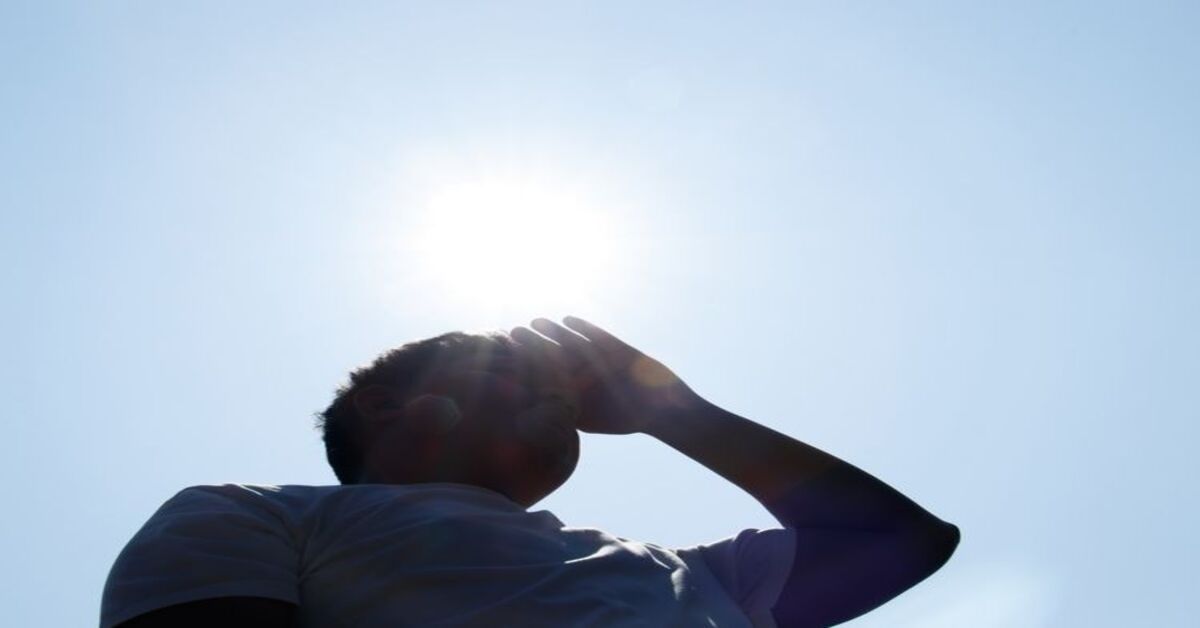As the mercury steadily rises through summer, like every year, UAE residents need to guard against heat rash, cramps and stroke, caution doctors who daily report at least two or three cases arising from exposure to heat across the country.
What is a heat stroke?
Sun exposure of different kinds can happen depending upon the time spent outdoors and the level of dehydration. Dr Rajesh Kumar Gupta, specialist in Internal Medicine at Burjeel Hospital Sharjah elaborated: “People suffer from various degrees of heat exposure. So one can have a heat rash, which is an outbreak of tiny red rash around the neck, face, forehead and other areas of friction on the skin that was exposed to the direct rays of the sun. Heat cramps can cause the muscles in the arms and legs to cramp with dehydration and loss of electrolyte balance. Heat exhaustion is marked by extreme fatigue, dizziness, nausea and vomiting.
Dr Gupta continued: “Heat stroke is the most serious of all. Heat stroke occurs when the body’s mean temperature, which is usually 37 degrees Celsius, rises owing to exposure to the sun and dehydration. It can go up to 40 degrees Celsius and result in extreme dehydration, even leading to multiple organ failure.”
Sunstroke can happen within minutes
One does not have to be out in the sun all day to get a sun stroke. A 15-30 minute exposure, too, can result in a sunstroke. “People often think sunstrokes can happen to a certain category of people like blue-collar workers or delivery persons who are out in the sun all day. However, it all depends on the body’s ability to acclimatise to the heat. We have people who are completely indoors, staying in air-conditioning all day. But when they suddenly step out in the middle of the day, the body gets a heat shock that can transform into a stroke,” cautioned Dr Gupta, who said people with comorbidities such as heart or kidney diseases and those taking diuretics or immunosuppressant drugs need to be careful.
How heat stroke affects human body?
Once an individual’s body temperature rises beyond 37.2 degrees Celsius, the body’s auto-cooling mechanism, i.e. profuse sweating, is triggered. The sweating results in loss of body fluids and in turn causes dehydration and loss of essential salts and electrolytes. This triggers muscle cramps, the heart begins to beat faster to facilitate better circulation and the pulse gets rapid. If not attended to immediately, the loss of water causes the body to get cold and clammy and results in low blood pressure. A patient can then get muscle cramps, seizures and eventually organ failure. Under such circumstances, any of the vital organs — heart, lungs, kidney — can go into shutdown mode, warned Dr Gupta.
He advised individuals experiencing such symptoms to immediately report to the emergency section of their nearest hospital and seek medical intervention.
What action should be taken?
The immediate intervention that is provided in Emergency Rooms of hospitals is restoration of the fluid balance in the body that helps in bringing down body temperature. Patients are administered intravenous electrolytes and given cold water sponging, which can help the body cool down rapidly.
Steps to bring heat stroke under control
A) Airways: Clearing the airways and ensuring that the individual is not wearing constricting clothing. B) Breathing: Assuring that the patient is breathing well, stabilising his heart and pulse.
C) Circulation: Assuring proper blood circulation by making sure the patient is in a supine position and the legs are elevated to facilitate more blood supply to the heart. Once the body cools down, it is recommended the patient stays in hospital under medical supervision for a few days. He or she must take ample rest and have electrolytes and water to restore the fluid balance of the body.”
How to prevent a heat stroke
Dr Gupta further said: “People need to remember to step out of their homes only in the morning and return closer to sun set. They must use a strong sunblock cream of about 50 SPF and have at least three litres of water daily. This will assure a lower rate of loss of electrolytes. To replenish, they can regularly drink fluids such as water with squeezed lemon juice and a pinch of salt and sugar or a sports drink to restore lost minerals before stepping out.”
Read Full Story: Gulf News


